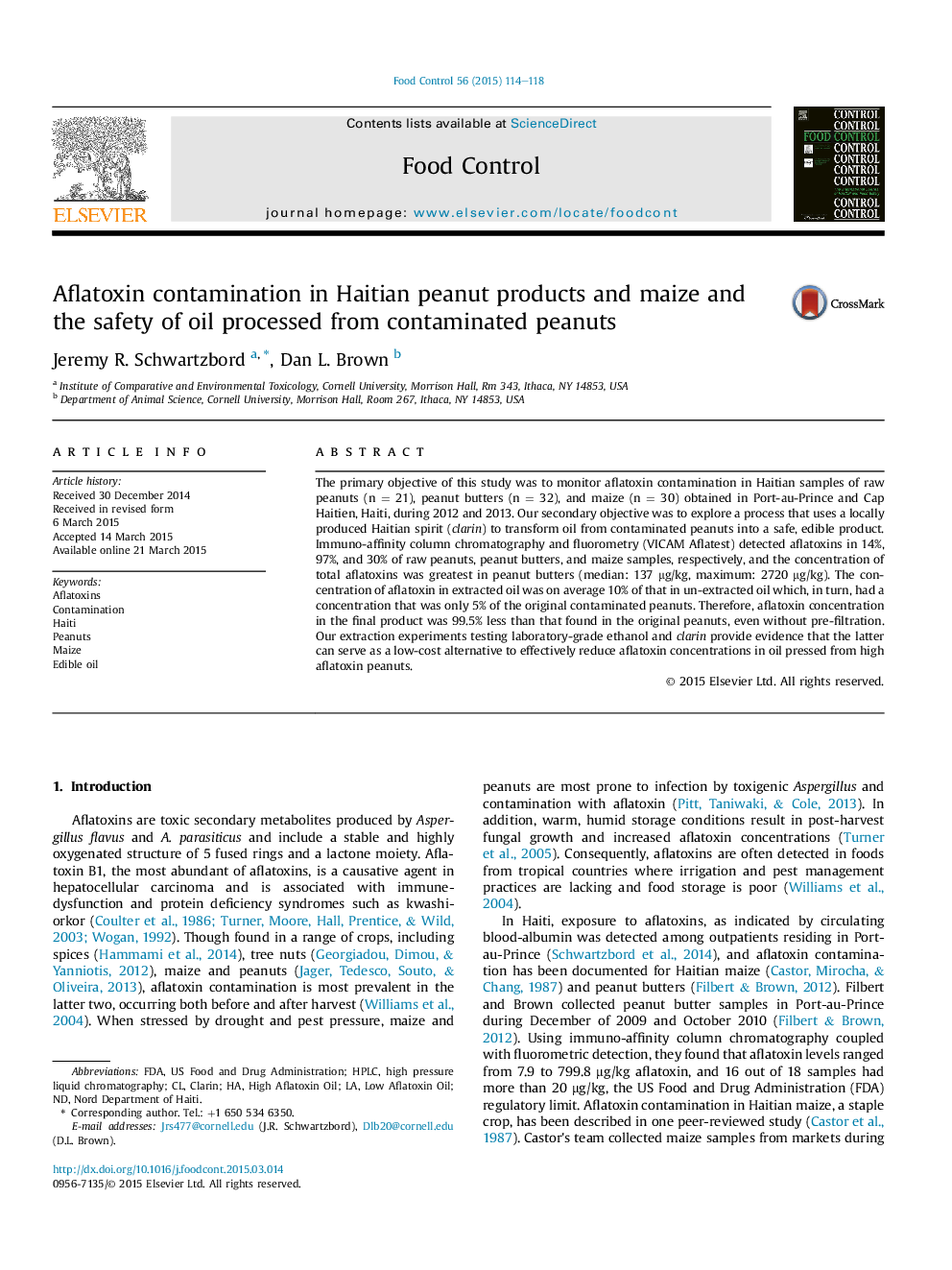| Article ID | Journal | Published Year | Pages | File Type |
|---|---|---|---|---|
| 4559225 | Food Control | 2015 | 5 Pages |
•Peanut butters (94%) and peanuts (14%) had greater than 20 μg/kg aflatoxin (AF).•AF was extracted from contaminated peanut oil with a locally made spirit.•The AF concentration of extracted oil was 0.5% of that found in contaminated peanuts.•Alternative uses of tainted foods will be essential in limiting exposure to AF.
The primary objective of this study was to monitor aflatoxin contamination in Haitian samples of raw peanuts (n = 21), peanut butters (n = 32), and maize (n = 30) obtained in Port-au-Prince and Cap Haitien, Haiti, during 2012 and 2013. Our secondary objective was to explore a process that uses a locally produced Haitian spirit (clarin) to transform oil from contaminated peanuts into a safe, edible product. Immuno-affinity column chromatography and fluorometry (VICAM Aflatest) detected aflatoxins in 14%, 97%, and 30% of raw peanuts, peanut butters, and maize samples, respectively, and the concentration of total aflatoxins was greatest in peanut butters (median: 137 μg/kg, maximum: 2720 μg/kg). The concentration of aflatoxin in extracted oil was on average 10% of that in un-extracted oil which, in turn, had a concentration that was only 5% of the original contaminated peanuts. Therefore, aflatoxin concentration in the final product was 99.5% less than that found in the original peanuts, even without pre-filtration. Our extraction experiments testing laboratory-grade ethanol and clarin provide evidence that the latter can serve as a low-cost alternative to effectively reduce aflatoxin concentrations in oil pressed from high aflatoxin peanuts.
